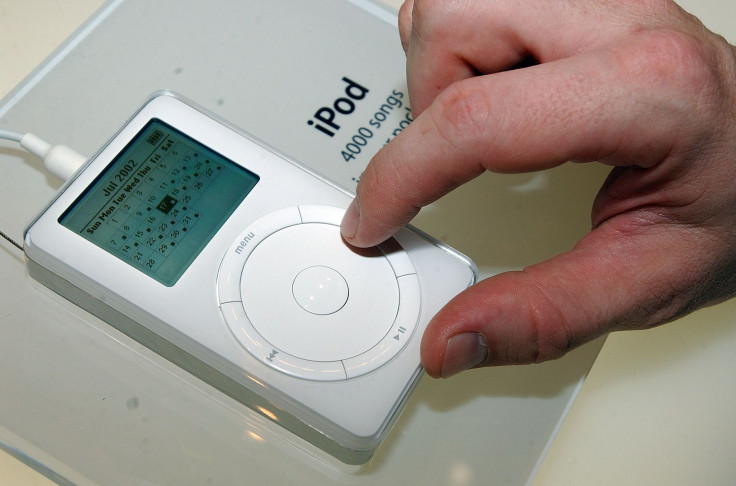RIP Apple IPod: Iconic Digital Player That Beat Them All Has Been Consumed By IPhone’s Success

Amid all the hype last week over the Apple Watch and iPhone 6 unveilings the demise of the iconic iPod was largely overlooked, which is probably one of the main reasons why Apple Inc. (NASDAQ:AAPL) decided the era of its revolutionary “1,000 songs in your pocket” gadget was over. Why have a separate product that’s essentially an iPhone without the phone?
Even before Apple announced the end to the portable music player that single-handedly ended the Sony Walkman’s decades-long reign from cassette to CD, sales of the iPod were declining -- by a lot. In the company’s first quarter of 2014 the player made up only 2 percent of Apple sales revenue compared to 56 percent for the iPhone. In the past six fiscal years, iPod sales declined from nearly $10 billion at their peak in 2008, a year after the iPhone debuted, to less than $5 billion last year.
“All of us have known for some time that iPod is a declining business,” Apple CEO Tim Cook said during that quarter’s conference call.
Apple will still sell its smaller players, though the latest iPod Nano received a noticeable downgrade in material quality: The metal case of the square third-generation of the device was downgraded to a rectangular piece of plastic in the most recent version. Apple is also keeping, for now, the iPod Touch, which is essentially a pocket-sized version of its iPad tablet.
The quiet end to the iPod era is especially felt among those who are old enough to remember when the device was first introduced in 2001 amid a profound shift in the way music was being delivered. Apple not only broke out with an attractive and intuitive gadget, but also followed through with the first successful digital-music storefront, iTunes Store, released in 2003 just as the iPod was gaining traction among consumers.
“Four hundred bucks was more than my car payment, but I didn’t care. This iPod -- whatever that meant -- was beautiful, and I wanted it bad,” Washington Post opinion editor Scott Butterworth wrote in his recent iPod eulogy. “It promised the never-ending mix tape, the opportunity to program a radio station that served a market of one: Fountains of Wayne to Janet Jackson to Nirvana to Alan Jackson to the Pretenders? No problem.”
At the time when the iPod made its debut, recordable CD-Rs were still a popular way to burn hours of digital music that could be played in CD-R compatible Sony Walkmans. The MiniDisc, also produced by Sony Corp. (TYO:6758), was lauded by audiophiles at the time for its high-quality live recording capability, but that technology lost out to newer portable digital recorders that could do the same without discs.
There were also dozens of cheap, mini portable digital music players, but none of them had desirable interfaces and depended on slow USB connections that could take minutes to load what the iPod could absorb in seconds with Apple's faster file-transfer hardware. When Microsoft Corp. (NASDAQ:MSFT) attempted to make its own version of the iPod, the Zune, it failed miserably to create something that could compete with Apple’s design sensibility and reputation for making widely accessible gadgets.
While some have criticized the iTunes interface for, among other things, the clunky way it handles music libraries, Apple has proved by the embrace of the iPhone there are plenty of fans who aren’t put-off by any of the faults in Apple’s digital music environment. What the iPod offers hasn’t gone away, but the iPod itself has been redundant for years.
© Copyright IBTimes 2024. All rights reserved.






















